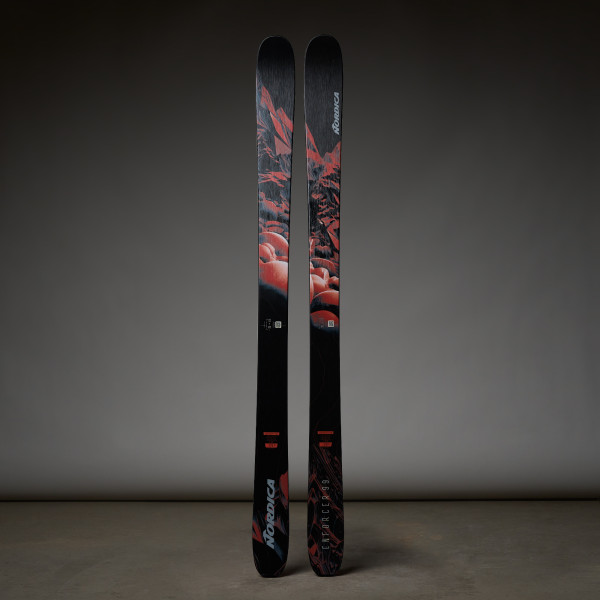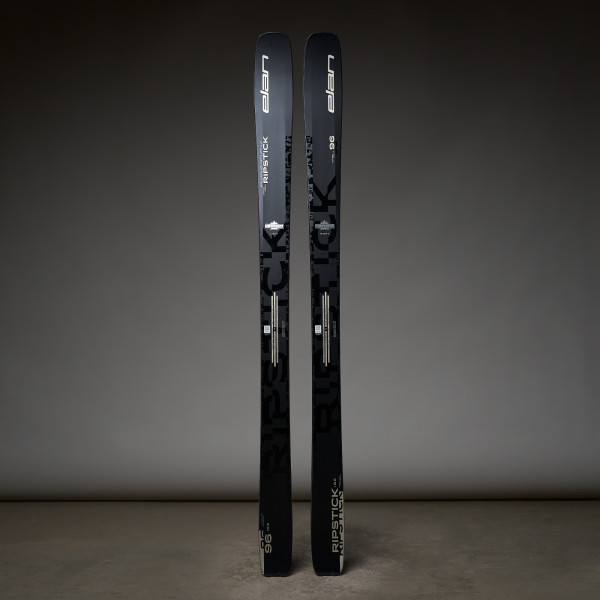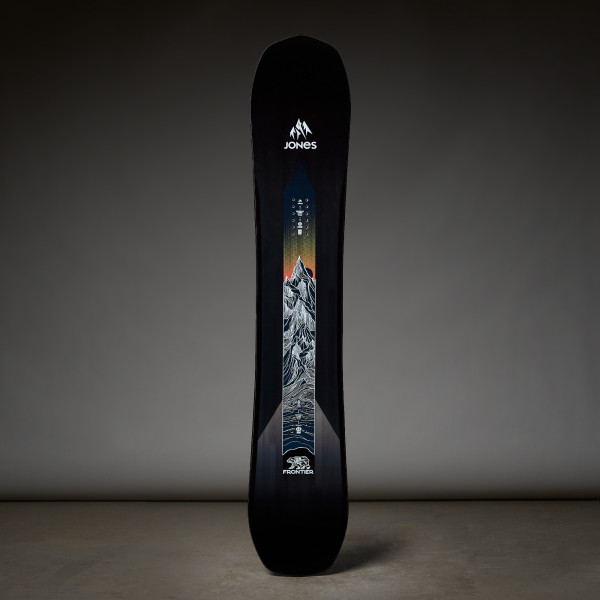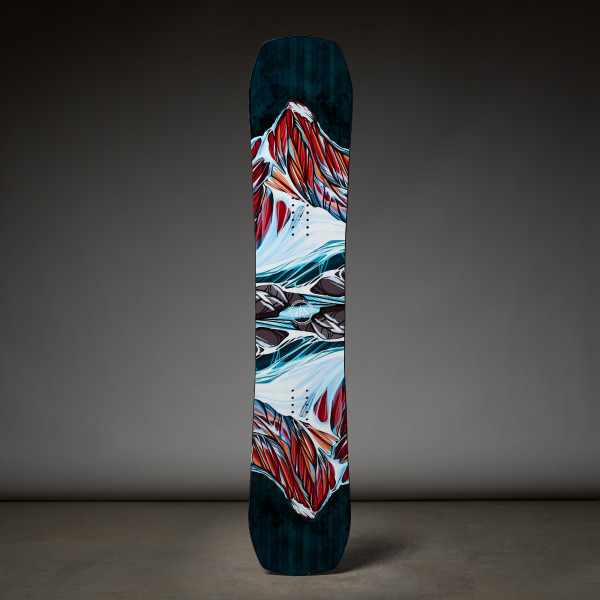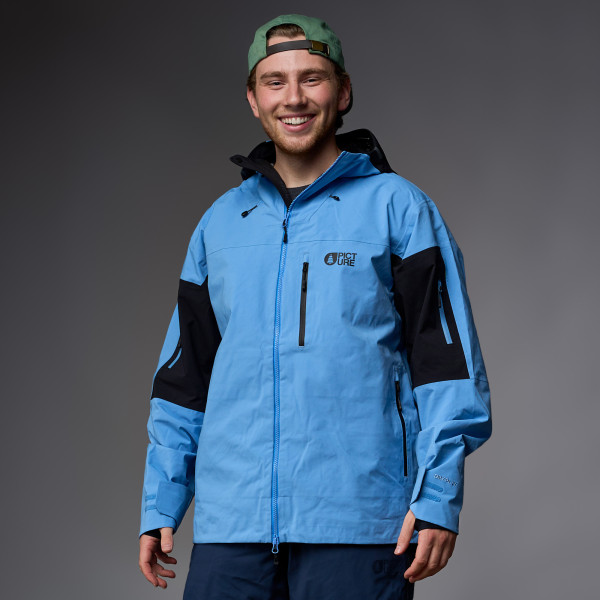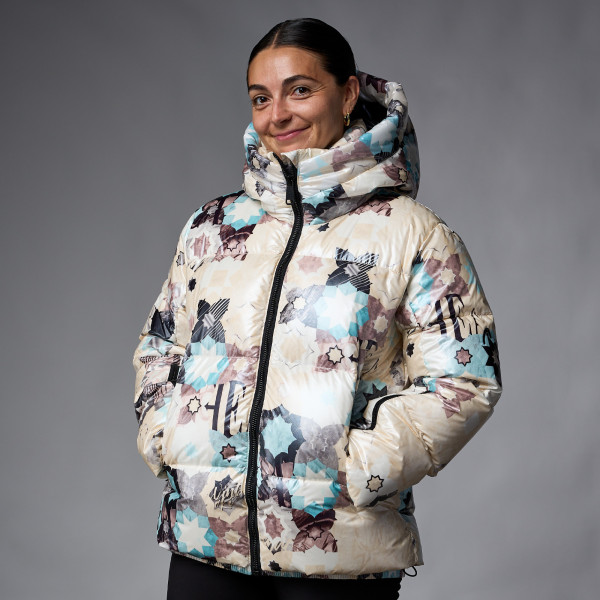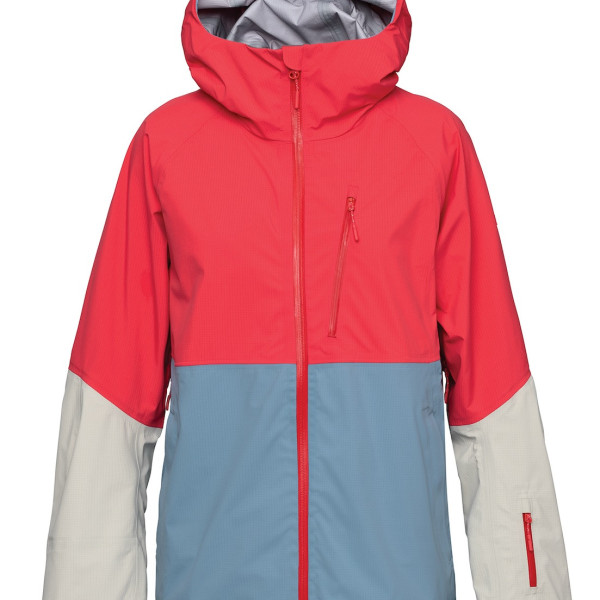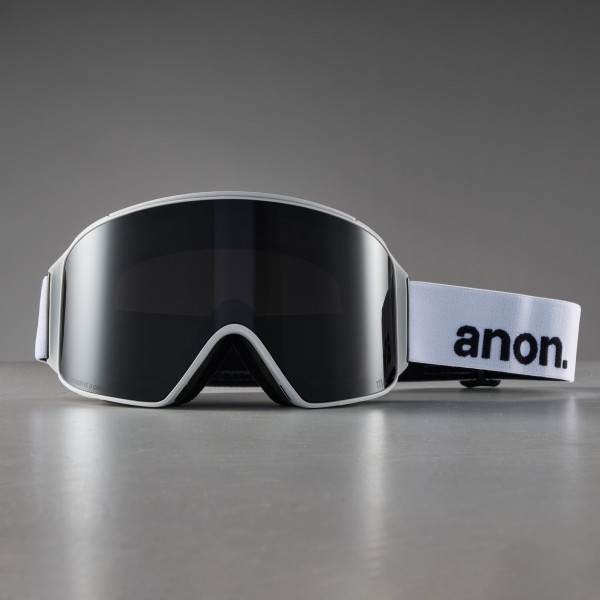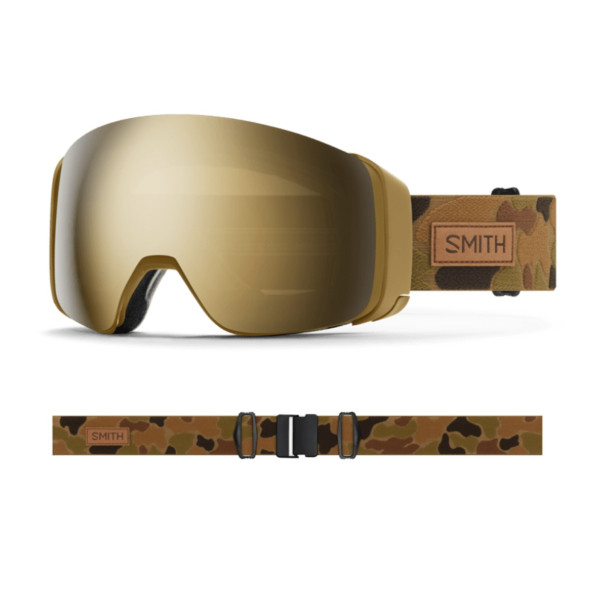Your Shopping Cart
Hot Items
Ski & Snowboard Outlets
Ski Construction: A Real Look at What’s Inside Your Skis
Posted July 14, 2020 @ 3:52pm | by Matt Berkowitz
Whether you have been skiing since you could walk, or you just recently started sliding around on snow, few of us really think about what goes into building those glorious winter sticks. And why would you? Your job is just to click in, head up, and shred down. However, the truth is that numerous different “ingredients” go into the construction of every pair of skis, and the combination of these ingredients is what gives each ski it’s own distinct personality and feeling. Why does one ski feel energetic and poppy, and another feels sluggish and planky? What is it that makes one ski grip well on hard snow versus a ski that floats well in powder? (Hint: there’s a lot more to it than just the width). Sandwich construction, PU injected, sidewalls, epoxy, carbon fiber, sintered bases, fiberglass, titanal…it’s enough to make your head spin. We’re here to break down each layer of what goes into building a ski, and more importantly what that means for you as a skier, so when you’re picking up your next set of sticks you can have a more clear idea of what you want and what you don’t. And as always, just because you’re spending an extra $100 or your buddy says that a certain ski or brand is the best thing since bubble chairs, that doesn’t mean you’re necessarily getting a “better” ski or one that even makes sense for you. We test skis all winter and write long, in-depth reviews and blogs like this one so you can find the ski that best matches your ability and style.
What it really boils down to is that just like any other consumer industry, manufacturers tout advantages of their materials and innovative methods through clever marketing campaigns and sometimes completely meaningless phrases and names. Don’t worry we’re here to cut through all that, and while ski constructions can vary greatly, the basic principles of building a good quality ski have remained the same for a long time.
Warning: The Following Paragraphs Contain a High Level of Ski Nerd-ism, Read Ahead at Your Own Risk.
Before we take a deep dive let’s cover some of the common ski jargon.
Damp = Stable. Smooth. Quiet.
Powerful = Strong rebound, able to be pushed.
Nervous = Jittery, disconnected, bouncy.
Pop = Good rebound, returns to center.
Quick = Short turning radius, reactive.
Dead = Low energy, flat, planky, no feedback.
Lively = Same as pop. Feels light while skiing.
Stability = Well balanced, consistent, predictable.
Confident = The feeling you get from a stable ski (subjective to skier ability).
Grip = Good edge hold, connected, centered.
Feedback = The ability for a ski to feel all of the positive traits above.
CORES:
Does it really matter what’s inside your ski? Absolutely! Every material inside your ski will not only determine the ski’s characteristics, but also determines what feelings reverberate from the snow to your skis, boots and onto you.
Laminated wood cores have been, and still remain, the gold standard in ski construction. Simply put, a laminated wood core is cut strips of wood that have been glued and pressed together. The core is truly the foundation to your skis and determines the weight, durability and flex characteristics which all relate to the overall performance and feel of a ski. Maple, Poplar, Beech, Ash and Aspen are among the most popular woods used in cores today for the majority of ski categories, and commonly they are blended together to achieve a more balanced feel. Harder, more dense woods like Maple and Ash will give a ski a stiffer more durable feel and are often used in hard charging skis where weight is less of a factor. Dense hard woods like these also have longer fibers, which hold up much longer and create more energy, this will allow more energy to be stored entering a turn, and more released exiting a turn. If you’ve skied on really powerful feeling skis that seem like they just burst in and out of each turn, a portion of that is created by the longer fibers in the core. When you use less dense woods like poplar and aspen, you give the ski a more playful and forgiving feel, better for whipping around in tight spaces and handling off-piste. The core thickness, wood blend, and length will vary depending on what characteristics you want from the ski. Typically, the absolute lightest varieties of wood like Paulownia, Bamboo, and Balsa are often used in touring skis because they reduce the overall weight. This is great for your legs when you’re dragging them uphill, but be careful about going with a ski that is super lightweight because there are tradeoffs. A light ski is nice while going uphill, but you will undoubtedly sacrifice some performance on the downhill, because lighter weight skis will tend to be less durable, chatter more (less damp), and have less edge grip in firmer conditions. Just like anything else, the kind of ski you’ll want is dictated by where you’re spending most of your time. If you’re primarily going to be on long tours, you might need an ultra-light ski that doesn’t ski all that well, but if you’re going down as often as you’re going up, you might enjoy something with more power in it.
It’s worth mentioning that not every ski even has a wood core, you’ll find injected polyurethane (PU) or “foam” cores typically used in mass market, rental and junior skis. These are more susceptible to vibrations/chatter and break down faster than wood over time. PU cores can be combined with wood for a “hybrid” approach in an attempt to combine the best of both worlds; lightweight and playful while still having energy and dampness. The foam cores are typically encapsulated with a topsheet (Cap) that rolls over the top down to the metal edge, sealing everything in. While capped skis are less susceptible to topsheet chipping, they are less stable at speed and tend to have less energy overall. The major disadvantage is on the manufacturing side though. Not only is foam difficult to control and balance the flex of the ski, but you have no wiggle room in the mold for adjustments. It’s a fixed cavity mold that needs to be filled up precisely, no adding or subtracting material. This can make prototyping a cap ski very expensive, and the cost savings of manufacturing injected skis only comes when the quantity is high. The truth is that realistically any and every high-performance adult ski will have a wood core over anything else.
STRUCTURAL LAYERS:
It’s called “sandwich” sidewall or laminate construction for a reason. Laying up a ski is pretty much like how you would stack up layers on a sandwich and hold all it together with two pieces of bread. Think of the wood core of the ski as the meat of the sandwich, and then all the laminates used above and below the wood cores are all your other ingredients and condiments that affect the dampness, energy, and torsional stiffness, basically the flavor profile, of the ski. Here are some of the most commonly used ingredients laminates:
Fiberglass – Just about the most widely used composite in the ski industry. It’s cost-effective, easy to use, and provides energy and responsiveness when combined with a wood core. Raw fiberglass looks like a simple woven white fabric, but when combined with epoxy resin, which is then heated and pressed, it becomes extremely strong which aids in longitudinal and torsional stiffness, essentially strengthening the ski to reduce chatter. Downside…it’s heavy after being saturated in epoxy and degrades over time.
Carbon Fiber – Used in the same way as Fiberglass, but is much lighter and generates more energy or “pop”. These benefits come a much higher manufacturing cost which is why many brands are just using Carbon Stringers (strands of carbon fiber on top of the wood core) instead of full layers of Carbon Fiber that run over the entire core. Although it’s rad to say you have carbon fiber in your skis, it can be a tricky material to use effectively. Carbon is much less damp than fiberglass, so if a ski has too much carbon, or if it’s not balanced out effectively with a wood core with good damping properties, you’ll have much more vibration which makes your ski nervous or chattery. It’s a balancing act.
Titanal (Metal) – An aluminum alloy that is only manufactured by one company in the world; 95% of the time when a ski is referred to as having “metal” in it, we’re talking about Titanal. Plain and simple, Titanal adds power, stability and dampness to a ski. As you might have guessed from that description, it’s typically found in more aggressive all-mountain skis because of the added strength and grip on harder snow. Titanal can be used in full sheets above and below the core and run from tip to tail and edge to edge, or strips can be used in only in certain sections. While most skis that had layers of Titanal in the past used two full sheets, a lot of skis are moving in the direction of just strips of metal in certain sections as a way to reduce the overall weight of the ski. Typically, the Titanal sheets used are 0.5 – 0.8mm thick and can be cut into any shape which gives brands a plethora of options on where to put it and how much to use in their skis.
Aramid (Kevlar) – Most commonly known for being in bullet proof vests, this fiber is also sometimes used in skis and snowboards. The advantage of Aramid over carbon fiber is the damping and impact absorption properties, but again comes at a higher cost.
Prepreg – This is a term for a reinforced fabric like fiberglass or carbon fiber that has been “impregnated” with a resin (epoxy) and is ready to lay into the mold without having to add wet resin by hand. In order for the laminate to cure, and bond to the core, a combination of pressure and heat is used while in the press. There are several advantages to using Prepregs in ski manufacturing:
- Consistency is probably the biggest advantage. You get the same ratio of resin every single time whereas brushing or rolling it on by hand typically creates an excess in some spots and dry spots in others. Perfect repeatability of every ski while applying resin by hand is essentially impossible.
- Prepregs are much cleaner and produce much less waste. No mixing cups full of resin, no messy rollers, drips everywhere, plus you aren’t rushing to apply the resin before it sets up.
- Not only do Prepregs have less curing time, but they also produce a smooth glossy surface that is virtually free of air bubbles.
Prepregs can be purchased in bulk from companies like ISO Sport and Hexel, but some ski brands take it a step further to have full control of the exact ratio of epoxy resin to fabric and prepare their own pregregs in house. You don’t necessarily think about consistency when it comes to skis, but there’s a reason that every single Nordica Enforcer 93 will ski the exact same.
So is there a disadvantage of using Prepregs? I’m sure you guessed it, cost. Even when you add up the the cost of the raw fabric, resin and cure, prepregs still cost more.
SIDEWALLS:
What do sidewalls even do? Think about pressing down on that behemoth sandwich you just made, everything’s gonna come squirting out the sides. Sidewalls not only provide a waterproof seal around the edges that protects the ski’s core, but they also help with impact durability and have a damping effect. The most commonly used materials for sidewalls are either ABS (Acrylonitrile butadiene styrene) or UHMW-PE (Ultra High Molecular Weight Polyethylene). UHMW-PE is also commonly used for base material. A third material that is typically only seen in race skis is Phenol. Phenolic sidewalls are much harder and stiffer than the others, but also bond better.
RUBBER:
Rubber material in a ski layup is primarily used as a bonding layer between the metal edges and the first composite layer. You need this shear layer between two materials that don’t like to bond together or else the materials will delaminate or separate from one another. Rubber will also absorb vibrations which is why some companies also put a layer of rubber up in the tip of the ski, especially in real racing skis.
BASES:
Bases are typically between 1-2mm thick and made from UHMW-PE. You might have heard or read the terms “Sintered” and “Extruded” in regards to bases. The difference between them is not the material itself but the process used to manufacture it. Extruded base material is made by completely melting down the polyethylene pellets to a viscous state, then compressing it into sheets. This method is more cost effective but the end product is slower, holds less wax and less durable. Sintered bases are made by compressing and heating polyethylene powder, but never reaches the melting point. This makes for a more porous and durable product that accepts wax easier.
TLDR: Sintered bases are faster and more durable but require more maintenance, Extruded bases are cheaper and easier to maintain.
EDGES:
We don’t need to tell you what your edges do. Right?
Steel edges are produced and supplied by two companies for almost the entire ski and snowboard industry. Commonly with a Rockwell hardness of 48, edges are available in a few different thicknesses (width/height) so brands can vary which edge they use depending on the category of skis. Lighter weight skis can use a thinner, lighter edge, while a park ski could use the thickest/widest edge.
TOPSHEETS:
It’s like makeup for your skis, but also helps with durability. Graphics can be applied with 3 methods; Screen Print, Sublimation, and Direct Print. There are a few plastic options used for topsheets, but durability isn’t the only difference. Certain plastics only work with certain graphic applications. For instance, TPU is too soft to use with a sandwich construction ski with prepreg because it would melt in the mold due to the higher temperature needed.
FINISHING PROCESS:
Real talk…A poorly finished ski can deem it virtually unskiable. Legendary freeskier and Fischer alpine product manager Mike Hattrup put it best when he recently said to me, “You can have the best built ski in the world, but if the base and edges are not finished correctly, it will ski like shit.” He added, “There is a reason World Cup racers have ski technicians that follow them all over the world tuning their skis.”
Industry leading finishing systems come at an incredible cost. Just the stone grinding systems at a few major factories cost between $5-7 million. These impressive machines not only cost a fortune, but take up quite a bit of space (up to 200 ft long) because of the fact that skis are typically run over 10-12 different stones during the process. This is just one more reason some of the smaller brands are having their skis made by major manufacturers. The consistency, accuracy, and precision capabilities of these systems what separates the “men from the boys” so to speak.
Getting a precisely flat base is an important starting baseline to make a ski perform how it should. With the advent of wider, thinner shovels, concave bases have become more prevalent. If a base is concave (high edges) the ski will feel “railed” which means it will want to run straight and be difficult to turn. If a base is convex (high base) the ski will feel very loose and be difficult to engage your edge. Also, if your base is not flat, your side and base edge bevels will be incorrect again making your ski perform poorly.
Other advantages of these finishing systems is the ability to not only adjust the base/edge bevels per category of skis, but also being able to modify base structures. Edge bevels will also be a determining factor in now “loose” or “tight” a ski feels. You want a wider/freeride ski to have a looser feeling so you have the ability to skid and smear the ski for a more playful feel. In contrast, typically narrower/carving skis have a more aggressive edge bevel that keeps you locked into a turn without breaking free.
Although the process of building a ski seems fairly simple, skis are extremely complicated products. Even with the shape and profile aside, the balance and bonding of materials on it’s own, not to mention final finishing process, there are countless ways to make a detrimental misstep. While most major manufacturers have come pretty close to mastering the steps to build an incredible ski, this is really a testament to how good ski construction has gotten in 2020, because it’s still a really really hard process to build a great ski, let alone an entire lineup of great skis.
TLDR: While it may not necessarily be important for you as a consumer to know if your ski’s sidewalls are made of Acrylonitrile Butadiene Styrene or Ultra High Molecular Weight Polyethylene, it is important that you understand that a wide variety of materials can be used in all different ways to change how a ski feels. By understanding what some of these materials are, and more importantly, what you want to get out of your ski from a performance perspective, you have a much better chance of ending up on the right sticks for you.

